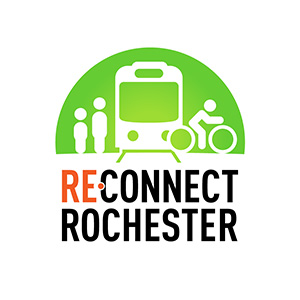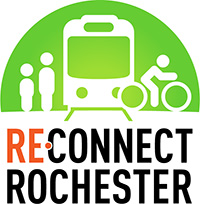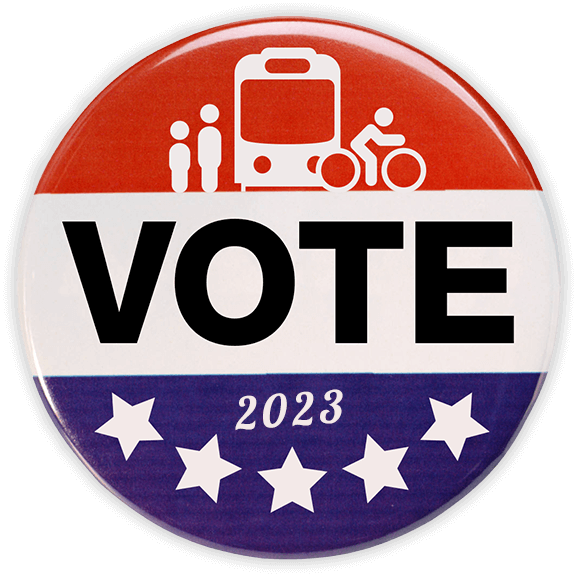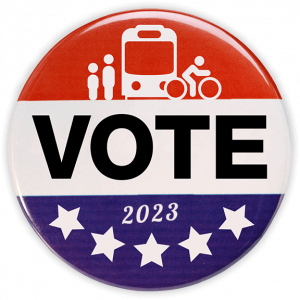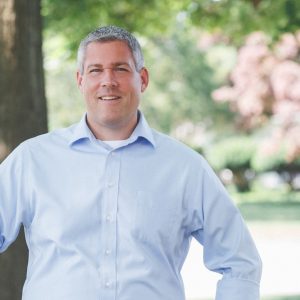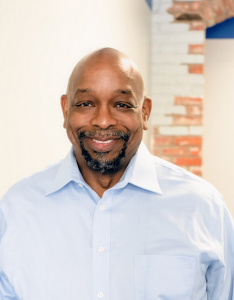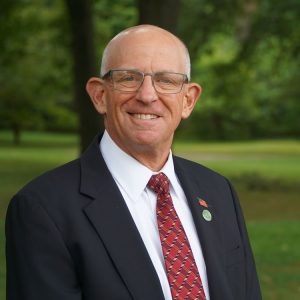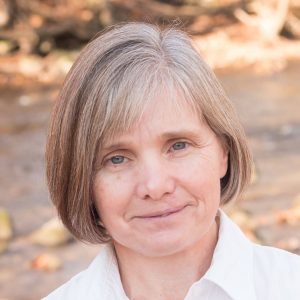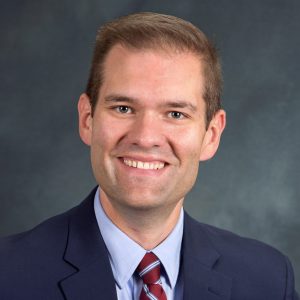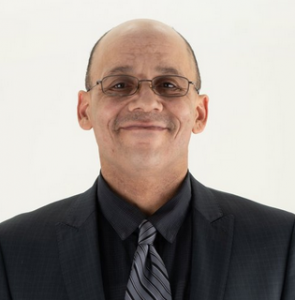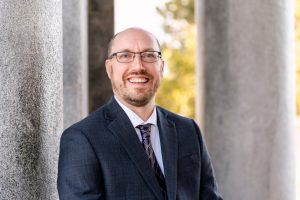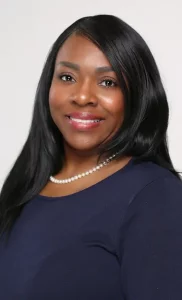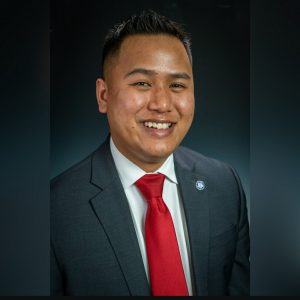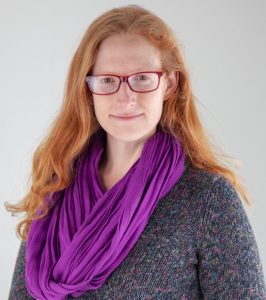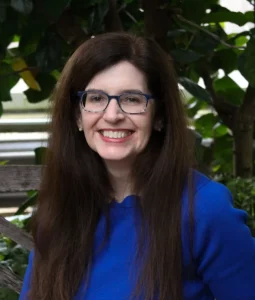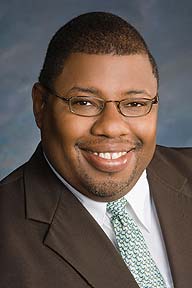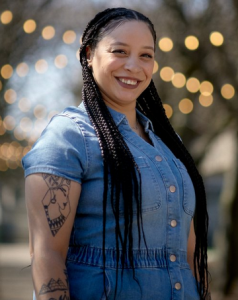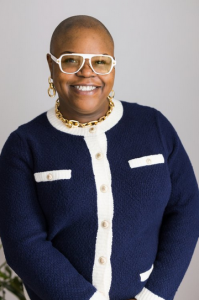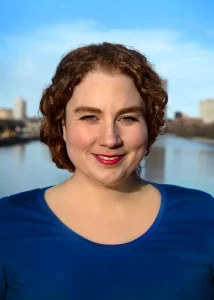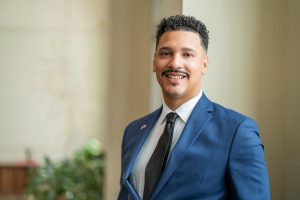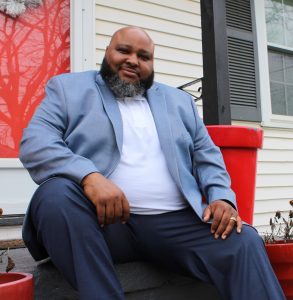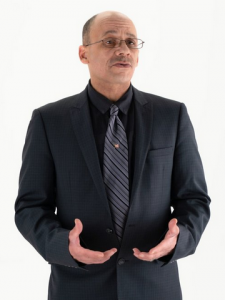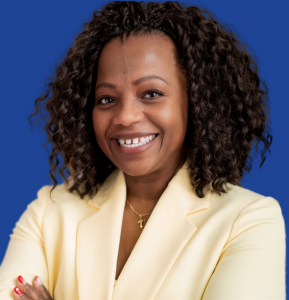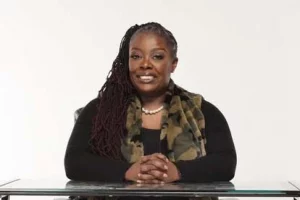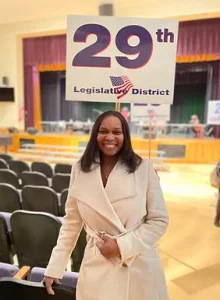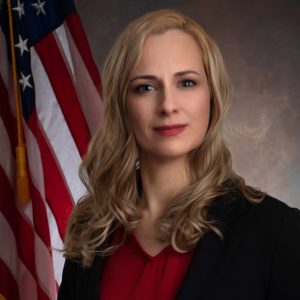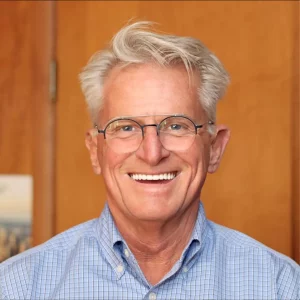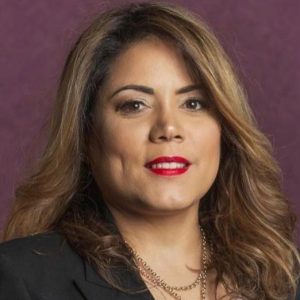Reconnect Rochester surveyed general election candidates for Monroe County Legislature and Executive to learn where they stand on issues related to transportation and mobility.
Questions were designed to give the candidates the opportunity to share their opinions, ideas and vision for a well-connected and accessible community. We hope this information will help you make an informed decision when you head to the polls on November 7th or Early Voting starting on October 28th (more info on early voting here). We contacted every candidate in writing and conducted several follow-ups in an attempt to obtain responses from every candidate on the ballot.
Click on the candidate names below to read their full, unedited responses. Candidates are listed in order of the district they are running for.
Some candidates previously answered in our Primary Election Questionnaire, so their answered are repeated here.
**This list includes only candidate who are running contested races for Monroe County Legislature and Executive on the General Election ballot. To check if you are registered to vote, confirm your polling location, and even see a preview of what your ballot will look like, click here.**
Candidates for Monroe County Executive:
Adam Bello
Candidate Email: info@belloformonroe.com
Website: https://belloformonroe.com/
1. What are Monroe County’s greatest transportation challenges?
Transportation is a challenge to health/safety, access/equity and sustainability that influences both personal and community wide opportunity.
Providing an equitable transportation system for all users is particularly crucial to help facilitate increased economic and social opportunities for populations and geographic areas that lack mobility options. Regardless of physical ability or mode of transportation everyone should also be able to travel safely and securely. The county’s pedestrian, bicycle, and transit networks connect many communities and provide access to places our residents need to go. However, many residents are not located near these networks or are unable to use them. People walking and biking in Monroe County, regardless of age, ability, income, or race/ethnicity, should be able to travel safely and comfortably in and between communities. Ensuring that low income, elderly, disabled, and young people have access is vital to increasing quality of life and offering a brighter economic future for all the County’s residents.
Transportation decisions that support environmental and sustainability goals are critical as the transportation sector generates the largest share of greenhouse gas (GHG) emission. Additionally, there is substantial cost associated with building, operating, maintaining, and repairing transportation assets including roads, bridges, culverts, sidewalks, and support facilities. It is important to convene the transportation community to identify federal and state resources to maintain current transportation infrastructure as well as investments in transportation expansion and enhancements.
I am proud that Monroe County is leading the effort to address these transportation challenges. Monroe County just completed the Countywide Active Transportation Plan (CATP), its vision is that people using all modes of transportation and regardless of age, ability, income, or race/ethnicity, will be able to travel safely between transit and active transportation reducing congestion and road maintenance needs. The CATP also emphasizes the importance of active transportation in addressing the climate crisis. Additionally, Monroe County is in the process of developing a climate action plan that is aimed at addressing sustainability, climate crisis issues county wide, and reducing GHG emissions.
2. What role can the Monroe County Executive play in addressing our transportation challenges?
The County Executive is able to lead and convene stakeholders who can help identify community priorities, and work together to develop and implement a plan to address them. When I took office, I made a commitment to develop a Countywide Active Transportation Plan (CATP). Developed over 18 months, the CATP, is the result of a collaborative partnership with Monroe County and the Genesee Transportation Council to engage local, regional, and state agencies, alongside community stakeholders, transportation experts, and the county’s residents. This comprehensive approach serves not only as a roadmap for decision-makers, stakeholders, and community members, ensuring alignment and cohesiveness, but also strengthens the County’s ability to procure funding for transformative projects and initiatives enhancing our transportation infrastructure.
The CATP outlines recommendations and strategies to make walking and cycling safer, more convenient, and more appealing for residents of all ages and abilities. The CATP process combines in-depth data collection with inclusive public engagement to promote health, equity, and community resilience in Monroe County. To begin addressing disparities through the CATP, Monroe County intentionally engaged with stakeholders and identified potential policy and program actions to increase access to transportation networks, and developed a framework for prioritizing investments equitably. Plan recommendations will help shape future transportation improvement projects that enhance safety, connectivity and transit access.
I am proud to report that the completion of the CATP marks a significant step toward a vision for enhancing active transportation infrastructure across the county, building a safer environment for active transportation, reducing congestion, and contributing to a more sustainable future for Monroe County.
3. The transportation sector in the Genesee Finger Lakes region is responsible for 33% of greenhouse gas emissions, which contribute to poor air quality, poor health outcomes, and overall climate change. Please share your ideas for reducing emissions as it relates to transportation in Monroe County.
When I took office, I made a commitment to address climate change both at the county operations level as well as community wide. Our Climate Action Plan (CAP) fulfills a promise I made to combat the impacts of climate change on our region. The CAP, is a comprehensive, strategic effort to reduce greenhouse gas (GHG) emissions and related environmental impacts of climate change. The CAP Phase I, developed during my first term and adopted by the County Legislature, established an aggressive goal of 80% reduction in GHG by 2050 for County operations. The sectors within the County operations targeted for GHG reductions include Buildings and Facilities, Transportation Fleets, Expressway Lighting and Signals, Pure Waters, Infrastructure and Solid Waste Facilities. Several priorities established in Phase I are already underway including the installation of electric vehicle charging stations at nine county-owned locations for county and public use. Each location is open to the public and will help support the use of clean vehicle technology across the county. The project is funded with grants from New York State’s Department of Environmental Conservation. Each location has multiple charging stations and allows up to four vehicles to charge at a time. By investing in this type of infrastructure, we’re also fulfilling some of the commitments we made as part of the County’s Climate Action Plan to reduce greenhouse gas emissions. The project will help expand the clean energy infrastructure that is available for public use in Monroe County. The use of electric vehicles locally contributes to improved air quality. Electric vehicles help achieve the County’s climate initiatives, and encouraging the use of electric vehicles helps pave the way for other forms of clean transportation.
The CAP Phase II, which is currently under development, will establish GHG emission reduction goals for the entire community, including residential, commercial, industrial, and municipal activities. I expect the CAP Phase II will include a more expeditious move towards electrifying buildings and vehicles, establishing opportunities for community wide scraps and organics recycling, exploring affordable green community power, and building more efficient buildings.
I believe that the County must lead by example, but needs community support and engagement to achieve meaningful and lasting GHG emission reductions. The Climate Action Plan is a framework for prioritizing future policies and projects to reduce GHG emissions. An audit of the plan will occur in 2025 and further reviews will occur every five years to measure the county’s progression towards its goals. The results of the audits will be public and will drive decision-making. We have already made great progress in reducing our carbon footprint and becoming more sustainable, but there is still much more work to be done. I remain committed to this important effort so together we can create a healthier, more resilient and equitable community for generations to come.
4. The concept of “Complete Streets” focuses on designing our roads to be safe for everyone, including pedestrians, cyclists, and transit users. How can Monroe County work with local municipalities and New York State toward that vision?
I am committed to a complete streets vision and am already working with local municipalities and NYS to successfully implement that vision.
As I have already referenced, the development and completion of the CATP is the result of a successful collaborative partnership. Developed over 18 months, the CATP, is the result of a collaborative partnership with Monroe County and the Genesee Transportation Council to engage local, regional, and state agencies, alongside community stakeholders, transportation experts, and the county’s residents. The CATP incorporates the vision of complete streets to enable safe access and mobility for all users. Additionally as we move forward to successfully implement this CATP, it is critical that there is continued coordination between county, town and state agencies. Monroe County is committed to this coordination to identify priority projects in support of active transportation infrastructure and plan implementation.
My administration wants to be helping assist with active transportation within our towns, I recently announced a new program that aims to encourage towns to add more sidewalks. This program aligns with our Complete Streets Policy and with our vision of a county that prioritizes the needs of its residents. The program offers towns up to 50% of the cost of sidewalk installations to make these crucial infrastructure improvements more affordable and attainable for our towns. Sidewalks play a pivotal role in creating safe and accessible pedestrian networks to help people of all backgrounds, including those with mobility challenges, to safely travel in Monroe County. The Town of Perinton is the first town to participate in this newly launched sidewalk initiative. I look forward to partnering with additional towns so that there will be sidewalks across our community.
In April, I was proud to announce with Town Supervisor Bill Moehle and County Legislators Susan Hughes-Smith, Linda Hasman, Howard Maffucci and Albert Blankley that bike lanes would be installed along Elmwood Avenue from South Goodman Street to Twelve Corners. The new lanes were a part of a Monroe County Department of Transportation (MCDOT) rehabilitation project to enhance connectivity throughout Brighton, and make it safer for kids, parents and anyone who bikes or walk along Elmwood Avenue. Monroe County worked closely with Supervisor Bill Moehle and his Public Works Department to successfully plan and implement this project that will seek to attract residents, spark economies, ensure transportation equity, promote public health, and address climate change.
5. Why should Monroe County residents who care about safer streets, better mobility, and better public transit vote for you?
Before I took office, I was constantly asked “what does County government even do?” Since I have been in office, I am asked, “How can County Government help with this problem?” The difference between now and then is that people now know that County government can and will help. For our community who is concerned about safer streets, better mobility and better transit, the County has spent the past 18 months developing a CATP for safer streets, better mobility and connections to public transit. I made a commitment to convene our community and develop and complete a plan and it is here. I would like to work for you over the next four years to begin to implement it.
Mark Assini
We did not receive a response from this candidate.
Candidates for Monroe County Legislature:
Legislature District 3:
Marvin L Stepherson
Candidate Email: Friendsofstepherson@gmail.com
Website: marvinstepherson.com
1. What are Monroe County’s greatest transportation challenges?
I would believe it is the lack of options: Job searching ability, commuting to a job, affordability, bus pass, car ownership, etc.
2. What role can the Monroe County Legislature play in addressing our transportation challenges?
We must engage the ones most directly impacted by it and take the suggestions to the planning stages to draft the goals in a tangible vision. and then get all stakeholders at the table to commit to the task of addressing the issues
3. The transportation sector in the Genesee Finger Lakes region is responsible for 33% of greenhouse gas emissions, which contribute to poor air quality, poor health outcomes, and overall climate change. Please share your ideas for reducing emissions as it relates to transportation in Monroe County.
We have to look at creating communities that are proactive in placing resources within the community to help minimize transportation challenges and reduce the practices that play a part in negatively impacting the environment.
4. The concept of “Complete Streets” focuses on designing our roads to be safe for everyone, including pedestrians, cyclists, and transit users. How can Monroe County work with local municipalities and New York State toward that vision?
The County can invite the local and State representatives to a meeting to discuss the designing of greener spaces that connect towns and Urban Communities. The more stakeholders involved the better planning and the higher quality of input.
5. Why should Monroe County residents who care about safer streets, better mobility, and better public transit vote for you?
My resume illustrates the work, and volunteer efforts I have demonstrated through the years, and it is that record I plan to build upon with my continued public service to this County.
Tracy DiFlorio
We did not receive a response from this candidate.
Legislature District 5:
Terry Daniele
We did not receive a response from this candidate.
Richard Milne
We did not receive a response from this candidate.
Legislature District 8:
Michael DiTullio
We did not receive a response from this candidate.
Mark Johns
We did not receive a response from this candidate.
Legislature District 9:
Mel Callan
We did not receive a response from this candidate.
Paul Dondorfer
We did not receive a response from this candidate.
Legislature District 10:
Howard Maffucci
Candidate Email: howardmaffucci@gmail.com
Website: howardmaffucci.com
1. What are Monroe County’s greatest transportation challenges?
The demographics and climate of our region create some challenges. Our region’s population lives in a wide area with a spread out population outside the city. That requires people to drive for work, family, and leisure activities. Our most significant challenge is having a region-wide active transportation plan embracing Complete Streets to make roads more pedestrian and bike-friendly in places that make sense. We must recognize there are times of the year when it is difficult for people to bike and walk. Our regional public transit system needs improvement.
As someone who bikes regularly, we must find ways to slow traffic down in places with dense populations. We must also ensure pedestrians can cross streets safely. I strongly support the active transportation development process.
2. What role can the Monroe County Legislature play in addressing our transportation challenges?
The county must continue to update its Active Transportation Plan and work collaboratively with other governments. As stated above, ensuring road updates in our area address the needs of pedestrians and bikers must be considered in road project planning. The county should also seek and support state and federal grants to assist in implementing Active Transportation Plans.
3. The transportation sector in the Genesee Finger Lakes region is responsible for 33% of greenhouse gas emissions, which contribute to poor air quality, poor health outcomes, and overall climate change. Please share your ideas for reducing emissions as it relates to transportation in Monroe County.
We should continue to promote the evolution of EV driving. Our family is currently all EV. We own two electric vehicles. We have ‘experimented’ with long trips and have found high-speed charging to continue to improve. Opening the Tesla networks to all other EVs will be a huge benefit.
We should also promote the conversion to heat pumps and solar technology for homes and businesses.
4. The concept of “Complete Streets” focuses on designing our roads to be safe for everyone, including pedestrians, cyclists, and transit users. How can Monroe County work with local municipalities and New York State toward that vision?
Please see my answer to question 1 and 2.
5. Why should Monroe County residents who care about safer streets, better mobility, and better public transit vote for you?
I’ve embraced EV driving and continue to engage with people who doubt the benefits of driving electric. I share my experiences regularly on social media, having been involved since 2013 in the evolution of the emerging electric vehicle technology, as my first three vehicles were hybrids.
Locally, I have assisted in implementing cross-walk improvements in my community and will continue to promote Complete Streets as part of community Active Transportation Plans.
I admit I am not an expert in transportation improvements. I will always listen and work with experts who can assist our region in embracing data-driven solutions to improve traveling as pedestrians, bikers, drivers, and public transportation riders travel in our area.
Nancy Lewis
We did not receive a response from this candidate.
Legislature District 13:
Michael Yudelson
We did not receive a response from this candidate.
Ethan Greene
We did not receive a response from this candidate.
5. Why should Monroe County residents who care about safer streets, better mobility, and better public transit vote for you?
Legislature District 14:
Sue Hughes Smith
Candidate Email: Sue@SueHughesSmith.com
Website: SusanHughesSmith.com
1. What are Monroe County’s greatest transportation challenges?
The current system is designed around individual, private cars and contributes to the interrelated problem of sprawl and exacerbates inequality. We need to redesign our transportation system to be more equitable, to create access to economic opportunity, and to provide individuals with the freedom to move safely by other modes including public transit, walking and biking.
2. What role can the Monroe County Legislature play in addressing our transportation challenges?
Monroe County has taken a good first step in developing an Active Transportation Plan that focuses on developing a more equitable system. The next task is to begin to implement the plan. The County Executive must direct DOT to review every road project and incorporate the appropriate design features like sidewalks and bike lanes. The County Executive must require DOT to change its complete streets policy from preferring shoulders to preferring bike lanes. The County Legislature can continue to advocate for those needed changes both publicly at committee and full legislature meetings, and privately with staff, and administration. The County Legislature can and should take the step to require a portion of the budget for Monroe County DOT be directed to implementation of the Active Transportation Plan.
3. The transportation sector in the Genesee Finger Lakes region is responsible for 33% of greenhouse gas emissions, which contribute to poor air quality, poor health outcomes, and overall climate change. Please share your ideas for reducing emissions as it relates to transportation in Monroe County.
There are three pieces to solving this situation: (1) Provide fast, reliable, frequent public transit – focus on a few major roads and incentivize future building redevelopment to locate and occur along those lines; (2) Expand bicycle and pedestrian infrastructure to create a safe and more equitable alternative; (3) Facilitate and build more EV charging stations to encourage the electrification of vehicles
4. The concept of “Complete Streets” focuses on designing our roads to be safe for everyone, including pedestrians, cyclists, and transit users. How can Monroe County work with local municipalities and New York State toward that vision?
Monroe County roads pass through many of our towns and villages providing us with the opportunity to partner with other communities in redesigning our infrastructure. The Legislature approved a 50% matching cost-share program to construct sidewalks along County roads. The County will pay 50% and the Town/Village would pay the other 50%. This is a significant change as previously all sidewalk costs were left to the Town/Village. I hope that communities take advantage of this pilot program and that the Legislature moves to make it a permanent offering.
5. Why should Monroe County residents who care about safer streets, better mobility, and better public transit vote for you?
My top concerns include addressing community needs that will improve public health, and the environment in ways that create a more resilient, equitable and prosperous county. One of the best ways to accomplish those goals is to create safer streets with more mobility options. I’m already working on this vision and will continue to advocate for the changes we need.
Pat Reilly
We did not receive a response from this candidate.
Legislature District 16:
Dave Long
Candidate Email: LegislatorLong@gmail.com
Website: www.davelongformonroe.com
1. What are Monroe County’s greatest transportation challenges?
I think the County learned a great deal from the creation of the Active Transportation Plan (ATP) and I was very glad to support that effort during my term in office. Challenges with equity, climate change, and funding are the greatest. Perhaps another more overarching challenge is how to leverage the various work-products and studies that have focused on transportation improvements in a way that moves forward in unison.
2. What role can the Monroe County Legislature play in addressing our transportation challenges?
Local jurisdictions are responsible for building and maintaining active transportation infrastructure so the County plays a limited role in the facility selection and design of individual routes (ex. the City of Rochester has its own ATP). Through legislation and funding, I see the County Legislature as playing a pivotal role as a body to help see through the idea of an “active transportation network” that serves as a resource for communities all over Monroe County. Also, the Legislature can help to make sure projects in areas like our Department of Transportation and those contained in our 5-year Capital Improvement Program are adhering to ATP recommendations.
3. The transportation sector in the Genesee Finger Lakes region is responsible for 33% of greenhouse gas emissions, which contribute to poor air quality, poor health outcomes, and overall climate change. Please share your ideas for reducing emissions as it relates to transportation in Monroe County.
I’ve been proud to be a part of adopting the first Climate Action Plan (CAP) which seeks to reduce the County’s greenhouse gas emissions 80% below 2019 levels by 2050. I am supportive of seeing this work through in my role on the Legislature. Also, I am supportive of CAP phase 2 which is focused on the emissions produced community-wide (outside of the direct control of the County government). I think these initiatives are ongoing/living efforts which will require continued collaboration of our elected officials in order to be successful.
4. The concept of “Complete Streets” focuses on designing our roads to be safe for everyone, including pedestrians, cyclists, and transit users. How can Monroe County work with local municipalities and New York State toward that vision?
Similar to my response to question two (above), I see the County as best-suited to be a connector and convener of communities to help connect in our area. Also, the County can work to create policy and enact legislation that brings entities together and incentivizes collaborative solutions to improving transportation for all.
5. Why should Monroe County residents who care about safer streets, better mobility, and better public transit vote for you?
I’m a husband and father of three who wants Monroe County to be the best place to live, learn, work and, play. I truly believe making our community more easily accessed is better for everyone and for future generations. I want these things for my family and neighbors because I care about our environment and taking actions to address climate change by making it easier to get around via means other than a car. Most of all, the planning done with the Active Transportation Plan and the Climate Action Plan require dedicated law makers to help see them through – I want to be part of the that team.
Joe Carbone
We did not receive a response from this candidate.
Legislature District 18:
Lystra McCoy
We did not receive a response from this candidate.
Sean Delehanty
We did not receive a response from this candidate.
Legislature District 20:
Jaime Erskine-Pettit
We did not receive a response from this candidate.
Robert Colby
We did not receive a response from this candidate.
Legislature District 21:
Oscar Brewer Jr.
Candidate Email: thepeoplesslate@gmail.com
Website: https://www.peoplesslateroc.com/
1. What are Monroe County’s greatest transportation challenges?
People need to be able to get where they’re going cheaply. Sometimes that’s not possible or efficient for people who don’t have a car.
2. What role can the Monroe County Legislature play in addressing our transportation challenges?
The county should be investing in public transportation opportunities to help low-income folks in our community. No one should be too poor to get where they need to go. I know first-hand the challenges of transportation in a county that’s built for people driving cars. In the County Legislature, I will be a voice for people who need transportation support.
3. The transportation sector in the Genesee Finger Lakes region is responsible for 33% of greenhouse gas emissions, which contribute to poor air quality, poor health outcomes, and overall climate change. Please share your ideas for reducing emissions as it relates to transportation in Monroe County.
Public transportation is a must. We need cheap, efficient public transportation options available to reduce reliance on cars. Also, making streets safer for people walking would encourage more people to walk to where they need to go.
4. The concept of “Complete Streets” focuses on designing our roads to be safe for everyone, including pedestrians, cyclists, and transit users. How can Monroe County work with local municipalities and New York State toward that vision?
We need to put people at the center of what we’re doing at all levels of government. Too often, politicians make decisions to benefit developers and big money interests. If we listen to our neighbors in the community, we’ll be able to prioritize what people need. That includes making sure sidewalks are safe for pedestrians and bike lanes are available for cyclists.
5. Why should Monroe County residents who care about safer streets, better mobility, and better public transit vote for you?
I know first-hand what it’s like not to have a car. I strongly believe in public transportation, which lets people live their lives without having to own a vehicle. I’m a man of the people fighting for the people. And that’s exactly what I’ll do in the County Legislature.
Santos Cruz
We did not receive a response from this candidate.
Legislature District 27:
Rose Bonnick
We did not receive a response from this candidate.
David Ferris
We did not receive a response from this candidate.
